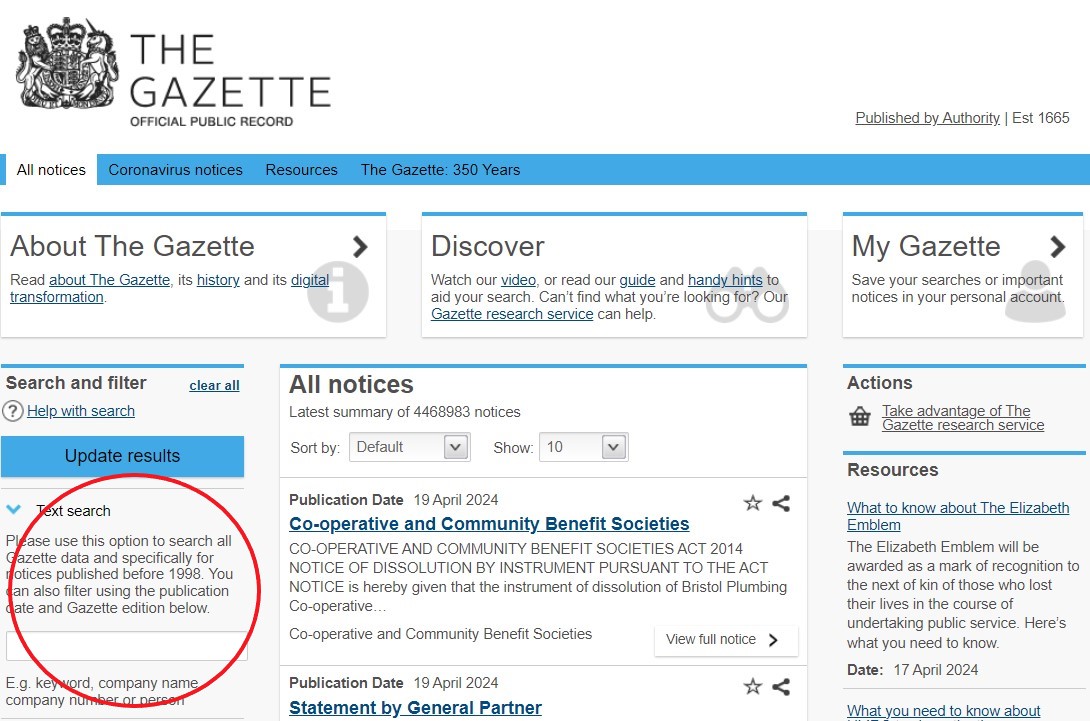VE Day and The Gazette - 80th anniversary

On Tuesday 8 May 1945, the Allied forces formally accepted Germany's unconditional surrender, signalling the end of World War II in Europe.
To mark the 80th anniversary of Victory in Europe Day, we’ve collated all Gazette resources from VE Day in one place. Read the official despatches from the Battle of Britain and D-Day or find out how to search your ancestors in our extensive WWII archive.
GAZETTE WORLD WAR II DESPATCHES
Despatches during World War II, submitted by commanders-in-chief, were published in The Gazette from 1941 until 1951, including:
A despatch from Air Chief Marshal Sir Hugh Dowding describing “the Air Fighting of last Autumn, which has become known as the “Battle of Britain””.
A despatch from Admiral Sir Bertram Ramsay describing on the opening phase of Operation Neptune, the naval component and assault phase of D-Day.
A despatch from Air Chief Marshal Sir Guy Garrod describing the part played by the Allied forces in the final defeat of the enemy in the Mediterranean theatre, from March to May in 1945.
You can see all WWII despatches in one place.
RESOURCES
Take a look at some of the biggest events happening in the UK which will mark the 80th anniversary of Victory in Europe Day.
Peter Doyle, Professor of History at London South Bank University, describes the final days of World War II and Victory in Europe.
Daniel Cowling, Historian at the National Army Museum, explores events in 1945 that led to the end of World War II, as well as its aftermath.
WWII Victoria Cross recipients
The highest military decoration in the British armed forces, the Victoria Cross was awarded 182 times to 181 recipients for action in the World War II. See all the recipients here.
Dr Jessamy Carlson, principal record specialist for Family, Local and Community History at The National Archives, explores the archives to tell the story of the investitures of VE Day in 1945.
Shreya Sharma, an oral historian and curator who works at the Devi Art Foundation in India, uses Gazette archives and first-hand testimony to look at the story of Indian soldiers during World War II.
Read about the women of the Special Operations Executive (SOE), a secret British spy organisation formed in 1940 which was tasked with supporting resistance movements during World War II.

WWII COMMEMORATIVE EDITIONS
The Gazette is available to buy as a personalised edition. The World War II deluxe presentation pack make a unique present for someone looking to commemorate a relative who received an award or a citation in The Gazette for their service.
The pack features a linen-textured folder containing a customised Certificate of Record printed on embossed paper, and a replica edition of The Gazette from the day of publication of the award.
Find out more at The Gazette shop.
HOW TO SEARCH FOR A SOLDIER IN THE GAZETTE
The Gazette is the official bearer of War Office and Ministry of Defence (MOD) events, and for hundreds of years The Gazette has been publishing honours and awards for gallantry and meritorious service in the armed forces, often referred to as 'Mentioned in Despatches'.
The easiest way to start a search on The Gazette is to head to the All notices section of the website, where you can type in the name of a soldier in the ‘Text search’ box (see below).

When searching for a soldier using keywords your success depends on the style used to gazette them at the time as there was no standard way of submitting and displaying information. For example, often no first name is used, just the initial and the soldier's surname. However, there are certain fields of information that had to be included in The Gazette for a soldier:
- name
- rank
- regiment
- date
- service number (post-1920)
It should also be noted that due to the column widths used in the printed Gazettes, a name could run over two lines and will be hyphenated, making it harder to find. The name of a soldier may also have been submitted in several different ways. Using the example of Arthur James Smith, it could have been listed:
- “Arthur James Smith”
- “Arthur J. Smith”
- “A. J. Smith”
- “A. James Smith”
- “Arthur Smith”
- “Smith, [service number] A. J.”
- “Smith, [service number] A.”
- “Smith, [service number] Arthur J.”
- “Smith, [rank], A. J.”
- “Smith, [rank], A.”
- “Smith, [rank], Arthur J.”
Providing details of a soldier will greatly improve your chances of success:
- Add a date range if the time of publication, if known.
- Add the award type to your search, for example typing 'Hollis Victoria Cross' into the search box returns Stanley Hollis's VC awarded in 1944 (Gazette issue 36658). It should be noted that often certain awards will be awarded to multiple individuals at once. This means the lists of recipients may run over multiple pages and the award may only be mentioned in the first page.
- Add the regiment or service number to your search, for example typing 'Apthorp Royal Norfolk Regiment ' or 'Apthorp 56653' into the search box returns a mention in 1946 for Desmond Pretyman Apthorp (Gazette issue 37720).
- Add the citation to your search. It should be noted that due to the sheer volume of soldiers being gazetted during conflicts, full citations were not common. However, there are several websites that provide information about servicemen, including Gazette citations, such as the Commonwealth War Graves Commission. For example, the entry for Charles Yate contains his citation. By typing “led his nineteen survivors against the enemy” into the search box, it returns his Victoria Cross entry (Gazette issue 12744).
